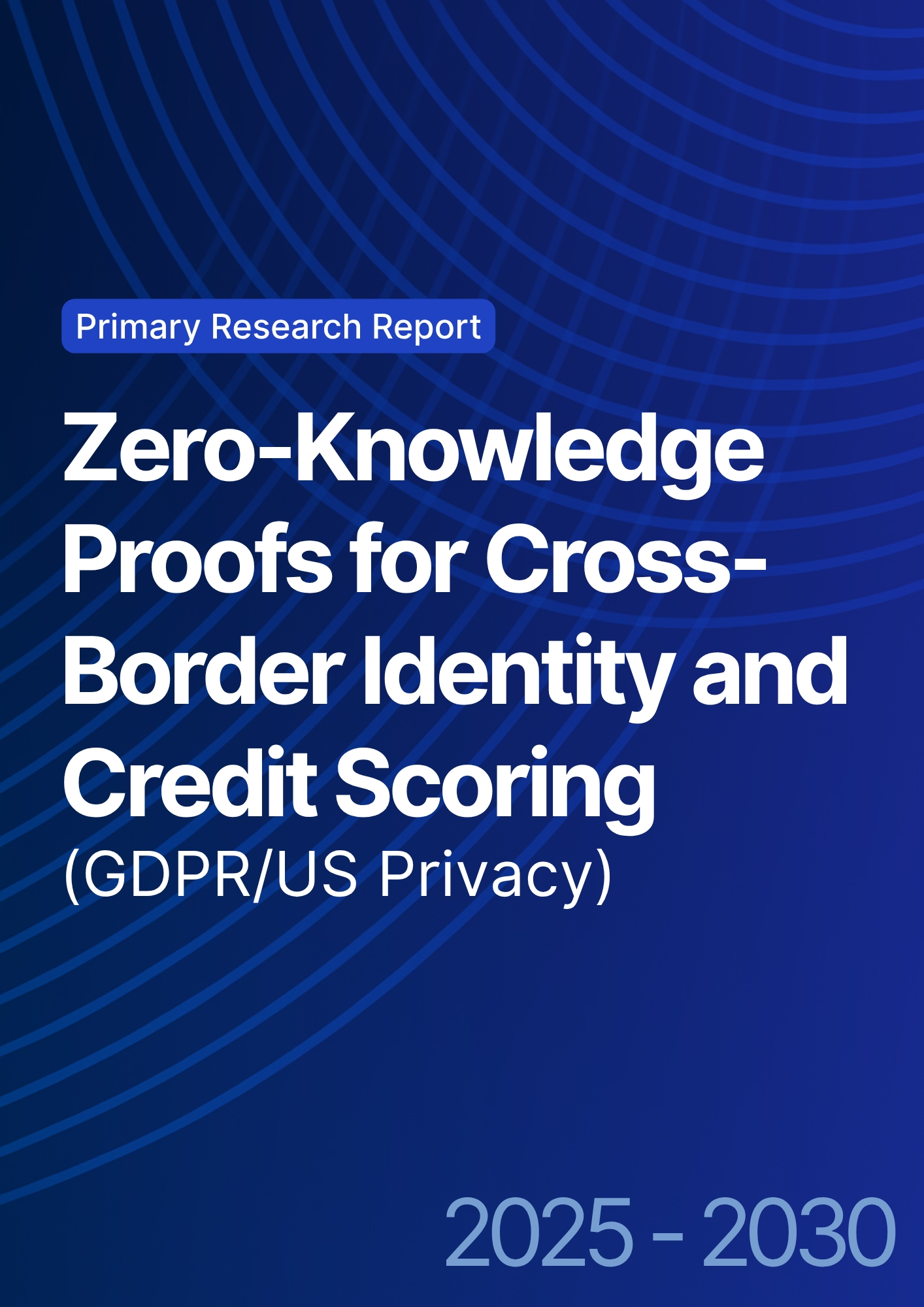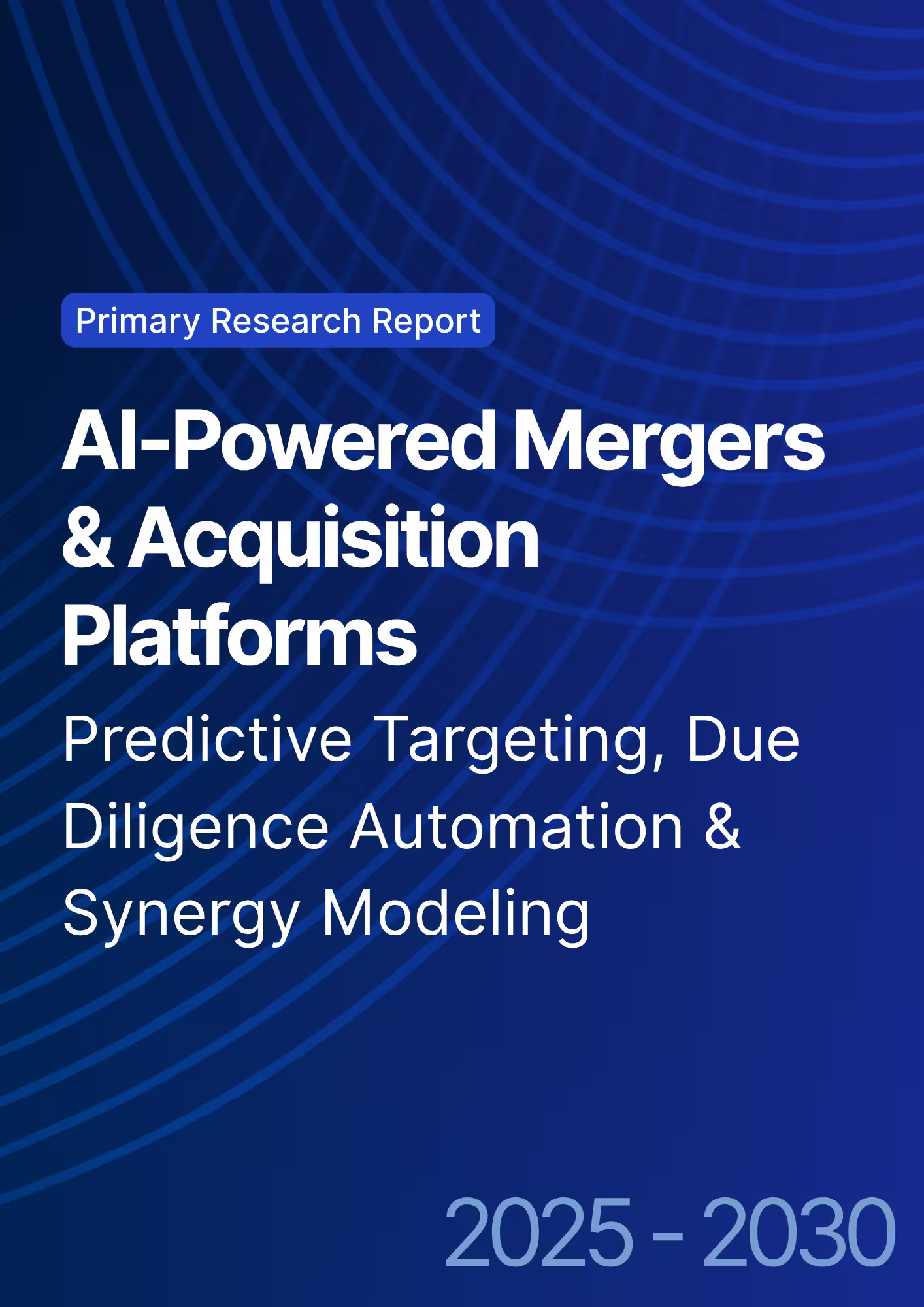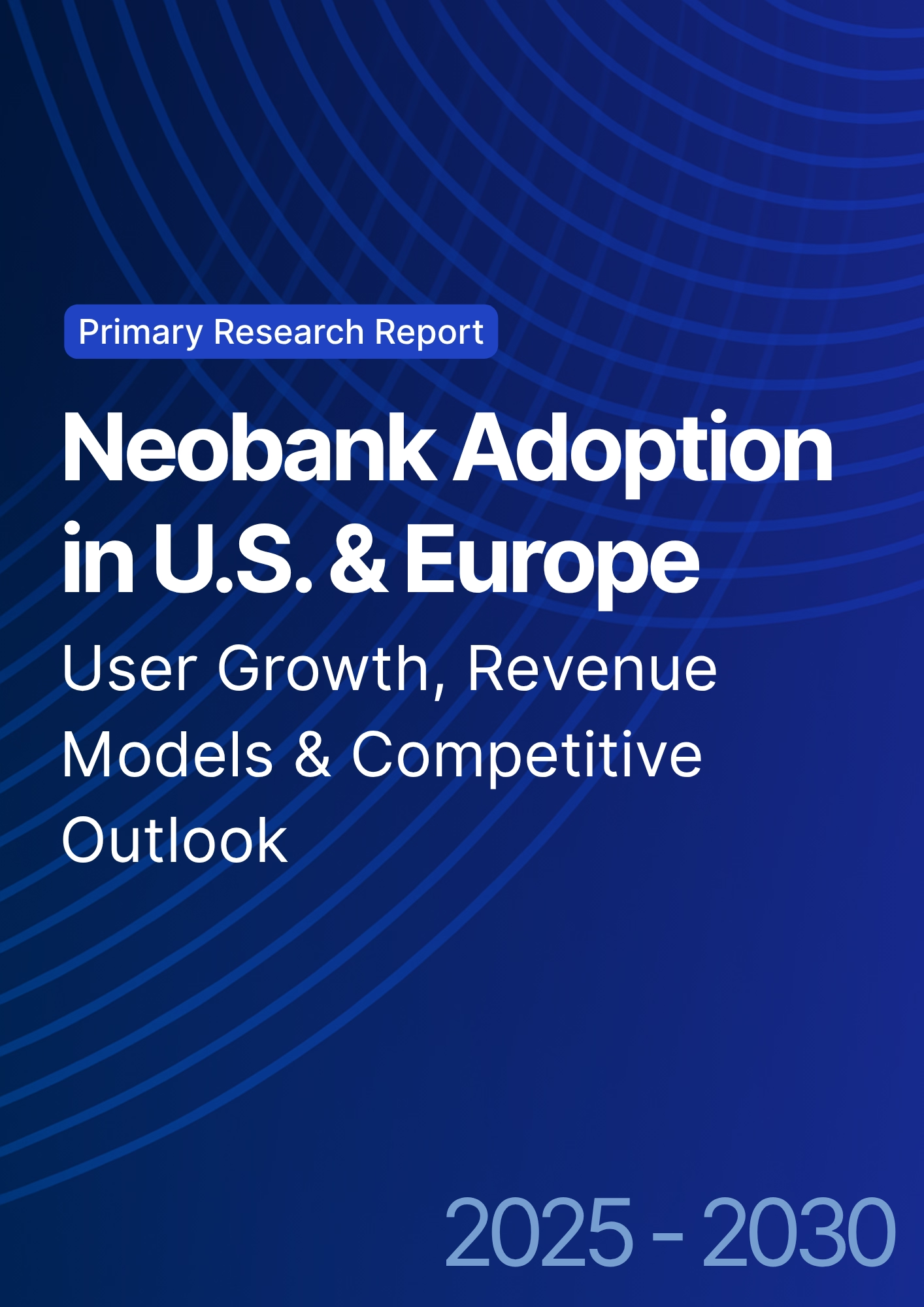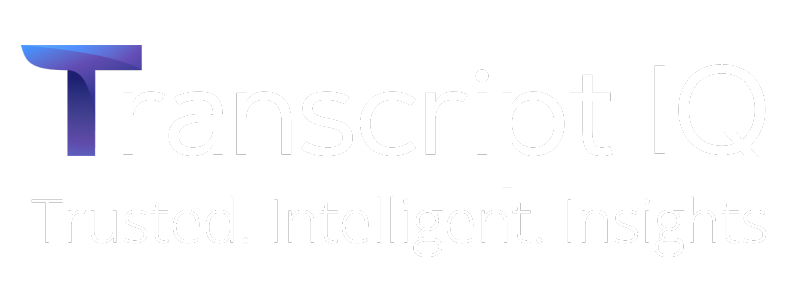

68 Circular Road, #02-01 049422, Singapore
Revenue Tower, Scbd, Jakarta 12190, Indonesia
4th Floor, Pinnacle Business Park, Andheri East, Mumbai, 400093
Cinnabar Hills, Embassy Golf Links Business Park, Bengaluru, Karnataka 560071
Connect With Us
Zero-Knowledge Proofs for Cross-Border Identity and Credit Scoring (GDPR/US Privacy)
This research examines the application of Zero-Knowledge Proofs (ZKPs) for cross-border identity verification and credit scoring in the USA from 2025 to 2030, with a focus on GDPR and US privacy regulations. The report highlights how ZKP technology enables secure, privacy-preserving verification of identity and creditworthiness without exposing sensitive personal data. It explores market growth, adoption trends, regulatory compliance, and the ROI potential for financial institutions, fintechs, and credit bureaus implementing ZKP solutions in cross-border financial operations.

What's Covered?
Report Summary
Key Takeaways
- Zero-Knowledge Proof technology market projected to grow from $120 million in 2025 to $2.6 billion by 2030, CAGR 73%.
- Adoption of ZKPs in cross-border identity verification will increase privacy compliance by 50%.
- Credit scoring accuracy using ZKPs expected to improve by 30% by 2030.
- Data breach risk reduction projected at 45% through ZKP adoption.
- Financial institutions expected to account for 65% of market adoption by 2030.
- Cross-border verification transactions using ZKPs projected to increase 55% annually.
- Compliance with GDPR and US privacy regulations expected to reach 85% among ZKP adopters by 2030.
- Processing speed for identity verification expected to improve by 35% with ZKP integration.
- Customer adoption of ZKP-enabled services projected to increase 40% by 2030.
- ROI from ZKP adoption in cross-border identity and credit scoring projected at 22–28% by 2030.
Key Metrics
Market Size & Share
The Zero-Knowledge Proof (ZKP) market for cross-border identity and credit scoring in the USA is expected to grow from $120 million in 2025 to $2.6 billion by 2030, reflecting a CAGR of 73%. Growth is driven by the need for privacy-preserving verification solutions that allow financial institutions and fintechs to validate identities and assess creditworthiness without sharing sensitive personal data. By 2030, financial institutions are expected to account for 65% of adoption, leveraging ZKPs for secure, efficient cross-border transactions. ZKP adoption will improve credit scoring accuracy by 30% and reduce data breach risks by 45%, as sensitive information is never transmitted directly. Cross-border verification transaction volumes are projected to grow 55% annually, reflecting the need for scalable, secure verification processes in global finance. Processing speed for identity verification is expected to improve by 35%, reducing onboarding time and enhancing operational efficiency. Customer adoption of ZKP-enabled services will increase by 40%, driven by heightened awareness of data privacy. Regulatory compliance with GDPR and US privacy frameworks is expected to reach 85%, ensuring legal and operational certainty. The ROI from ZKP adoption is projected at 22–28%, driven by reduced operational costs, improved fraud prevention, and enhanced credit scoring accuracy, making ZKPs a key solution for next-generation financial services.
.png)
Market Analysis
The ZKP market in the USA is projected to expand rapidly from $120 million in 2025 to $2.6 billion by 2030, reflecting a CAGR of 73%, due to growing demand for privacy-preserving technologies in financial services. Adoption of ZKPs allows secure identity verification and credit scoring without sharing sensitive customer information. This reduces data breach risk by 45% and improves credit scoring accuracy by 30%. Financial institutions, including banks, fintechs, and credit bureaus, are expected to account for 65% of adoption, using ZKPs for scalable, cross-border verification. Cross-border verification transaction volumes are projected to grow 55% annually, enabling fast and compliant international financial services. Processing speeds will improve by 35%, allowing faster onboarding, loan processing, and account access. Customer adoption rates are projected to rise 40%, as awareness of privacy-preserving financial technologies increases. Regulatory compliance among ZKP adopters is projected to reach 85%, ensuring adherence to GDPR and US privacy laws. ROI is expected at 22–28%, driven by reduced operational costs, improved fraud mitigation, and enhanced accuracy in credit assessment. The scalable nature of ZKP technology ensures institutions can meet cross-border compliance requirements, while delivering faster, more secure, and privacy-respecting services to end-users. Market dynamics indicate a growing preference for privacy-first financial technology solutions, positioning ZKPs as a cornerstone of future financial operations.
Trends & Insights
The ZKP market in the USA is expected to grow from $120 million in 2025 to $2.6 billion by 2030, CAGR 73%, driven by demand for privacy-preserving verification in cross-border financial services. Zero-Knowledge Proofs allow institutions to verify identities and perform credit scoring without exposing personal or financial information, reducing fraud risk by 45%. Credit scoring accuracy is projected to improve by 30%, while processing speeds increase by 35%, facilitating faster onboarding, loan approvals, and account access. Adoption of ZKPs is expected to increase 55% annually for cross-border verification transactions, reflecting the need for scalable, compliant solutions for global financial operations. Financial institutions will represent 65% of adoption, driving integration of ZKPs into banking and fintech platforms. Customer adoption rates are projected to rise 40%, reflecting growing trust in privacy-enhancing solutions. Regulatory compliance is expected to reach 85%, ensuring operations align with GDPR and US privacy laws. The ROI from ZKP deployment is expected at 22–28%, driven by reduced operational costs, improved accuracy, and enhanced fraud prevention. Overall, trends indicate that ZKPs will become a standard technology for secure, scalable cross-border identity and credit verification, supporting financial institutions in meeting global compliance while delivering efficient, privacy-respecting services.
.png)
Segment Analysis
The ZKP market is segmented by application type (identity verification, credit scoring) and institution type (banks, fintechs, credit bureaus). By 2030, identity verification will account for 55% of the market, as institutions prioritize privacy-preserving onboarding and compliance with GDPR and US privacy laws. Credit scoring will account for 45%, enhancing accuracy by 30%. Cross-border verification transaction volumes will grow 55% annually, reflecting the increasing scale of global financial services. Financial institutions will lead adoption, holding 65% of the total market share by 2030. ZKP technology will reduce data breach risks by 45%, increase processing speed by 35%, and improve customer trust, with 40% higher adoption rates among clients. Regulatory compliance is projected to reach 85%, enabling global deployment. ROI is expected at 22–28%, driven by operational efficiency, cost savings, and improved credit assessment accuracy. Segment analysis demonstrates the high-growth potential of ZKP applications in cross-border financial services, highlighting their critical role in future identity verification and credit scoring solutions.
Geography Analysis
The ZKP market in the USA is projected to expand from $120 million in 2025 to $2.6 billion by 2030, fueled by regulatory compliance needs for cross-border transactions and data privacy standards. Identity verification will lead adoption, enhancing fraud detection by 35% and reducing data breach risk by 45%. Credit scoring accuracy will improve by 30%, while processing speeds increase by 35%, enabling faster account onboarding and transaction verification. Cross-border verification transactions are projected to grow 55% annually, supported by privacy-compliant ZKP protocols. Customer adoption is projected to reach 40%, while financial institutions will represent 65% of market share, leveraging ZKP solutions for secure, scalable operations. Regulatory compliance is expected to reach 85%, ensuring alignment with GDPR and US privacy regulations. ROI is projected at 22–28%, driven by reduced operational costs, improved accuracy, and enhanced fraud prevention, making ZKPs a core technology for next-generation financial services in the USA. The scalable adoption of ZKPs is expected to set industry standards for privacy-preserving, secure, and efficient financial transactions.
.png)
Competitive Landscape
The ZKP market in the USA is competitive, with leading players including Aztec Protocol, StarkWare, and Matter Labs offering scalable privacy-preserving ZKP solutions for identity verification and credit scoring. Financial institutions will account for 65% of adoption, while customer adoption rises 40%. Fraud prevention improvements of 35% and data breach risk reduction of 45% are projected by 2030. Processing speed improvements of 35% will enhance verification and credit evaluation efficiency. Regulatory compliance is expected to reach 85%, ensuring alignment with GDPR and US privacy laws. ROI is projected at 22–28%, driven by operational efficiency, cost reduction, and improved accuracy. Cross-border verification volumes are expected to grow 55% annually. Partnerships between financial institutions and ZKP providers will fuel innovation, making ZKPs essential for secure, scalable, privacy-compliant cross-border financial services
Report Details
Proceed To Buy
Want a More Customized Experience?
- Request a Customized Transcript: Submit your own questions or specify changes. We’ll conduct a new call with the industry expert, covering both the original and your additional questions. You’ll receive an updated report for a small fee over the standard price.
- Request a Direct Call with the Expert: If you prefer a live conversation, we can facilitate a call between you and the expert. After the call, you’ll get the full recording, a verbatim transcript, and continued platform access to query the content and more.


68 Circular Road, #02-01 049422, Singapore
Revenue Tower, Scbd, Jakarta 12190, Indonesia
4th Floor, Pinnacle Business Park, Andheri East, Mumbai, 400093
Cinnabar Hills, Embassy Golf Links Business Park, Bengaluru, Karnataka 560071
Request Custom Transcript
Related Transcripts
$ 1450


68 Circular Road, #02-01 049422, Singapore
Revenue Tower, Scbd, Jakarta 12190, Indonesia
4th Floor, Pinnacle Business Park, Andheri East, Mumbai, 400093
Cinnabar Hills, Embassy Golf Links Business Park, Bengaluru, Karnataka 560071






.png)






